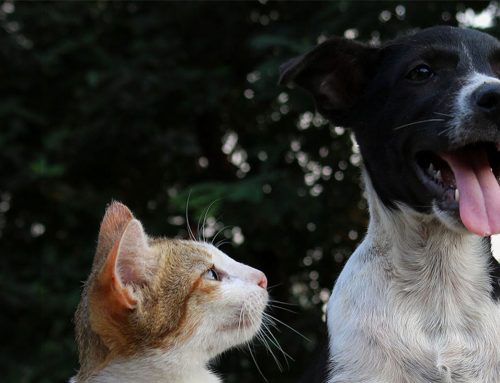Has your pet been drinking more than usual lately? Have they been losing weight?
These are some of the early signs of diabetes, a common endocrine disease in cats and dogs. You’ve probably heard of the term before, but what is diabetes?
What is Diabetes?
Diabetes mellitus, commonly known simply as diabetes, is a condition where there is a lack of insulin available in the body. Insulin is a hormone produced by the pancreas that regulates the way the body uses glucose. Glucose (blood sugar) provides the body energy required for functioning. When there is a lack of insulin, cells in the body are unable to absorb glucose and as a result there is an excess of glucose in the blood.
There are several types of diabetes:
- Type I: insulin dependent diabetes. In this form of disease, damage to cells that normally secrete insulin result in a an absolute deficiency of insulin within the body. As a result, there is a need for insulin administration to allow the body to achieve glycaemic control. This form of disease is most common in dogs
- Type II: non-insulin dependent diabetes. In this form of disease, the body becomes resistant to the effects of insulin due to diabetogenic hormones (eg. glucagon, growth hormone) or obesity. This form of disease is most common in cats
- Type III: secondary diabetes. This form of diabetes occurs due to insulin resistance that is triggered by concurrent disease elsewhere in the body. Common examples include pancreatitis, hyperadrenocorticism, urinary tract infections, and hyperthyroidism.
All dogs are susceptible to diabetes but it is usually seen in middle aged to older dogs. Certain breeds are also predisposed to developing diabetes, these include:
- Keeshond
- Poodle
- Samoyed
- Dachshund
- Alaskan Malamute
- Miniature Schnauzer
- Chow Chow
- Beagle
- Doberman Pinscher
- Labrador Retriever
- Old English Sheepdog
- Golden Retriever
- Miniature Pinscher
- English Springer Spaniel
- Rhodesian Ridgeback
- West Highland White Terriers
How is Diabetes Diagnosed?
A diagnosis of diabetes is made based off clinical signs, elevated blood glucose concentration, and glucose in the urine. Typical clinical signs of diabetes include:
- Increased urination
- Increased thirst
- Increased appetite
- Weight loss
- Lethargy
- Blindness
- Vomiting & Diarrhoea
- Inappetance
- Hair Coat Changes
- Muscle Weakness
Blood and urine testing is performed to determine blood and urine concentrations of blood glucose. If both are elevated, a diagnosis of diabetes can be made. In some cases, a full blood panel or urine culture may be performed to rule out concurrent diseases such as pancreatitis or a urinary tract infection.
Managing Diabetes
Diabetes cannot be cured, but it can be managed. The most important goal of managing a diabetic patient is to resolve clinical signs and establish a good quality of life. Other goals of therapy include:
- Minimising risks of hypoglycaemia (blood sugar going too low)
- Preventing long-term complications (eg. blindness, neuropathy, hypoglycaemia)
Monitoring a Diabetic Patient
If your pet has been diagnosed with diabetes, it is important to take note of the following at home:
- Water Intake: try to measure the amount of water intake every day. Patients with good glycaemic control will usually drink less than 60 ml/kg/day.
- Activity Appetite: make a note of demeanour, body condition, energy levels, and appetite. If you notice any significant weight loss, a change in appetite, or excessive lethargy please contact your veterinarian.
- Urine Dipsticks: monitor the level of glucose in the urine. Patients with good control usually have 1+ or trace glucose. Do not alter any insulin dosing based on a dipstick reading. If there are any ketones present, please contact your veterinarian.

Dr Ron Tong
BVSc




